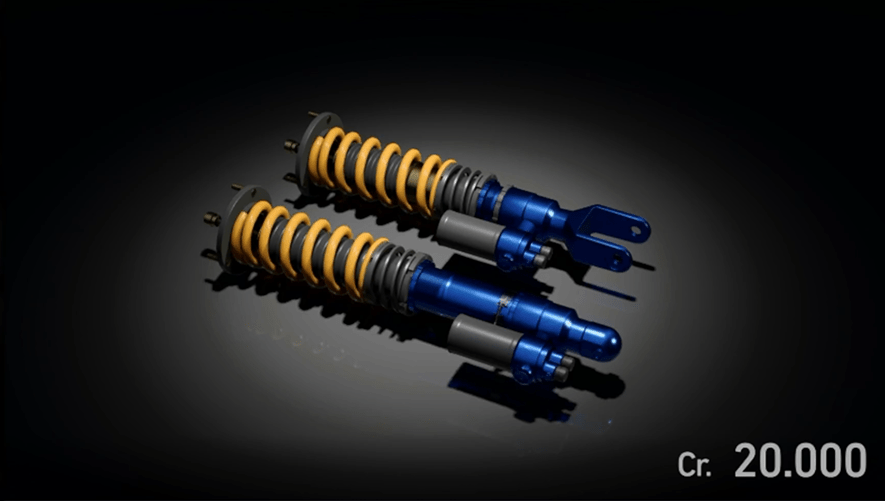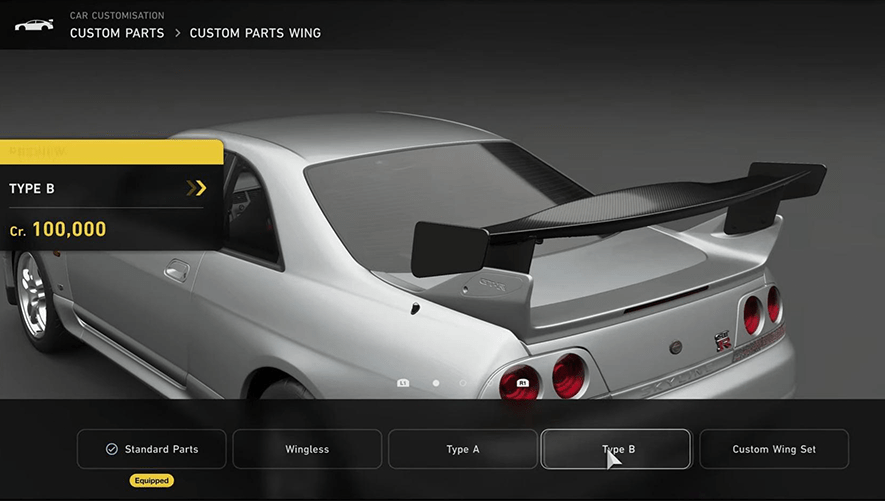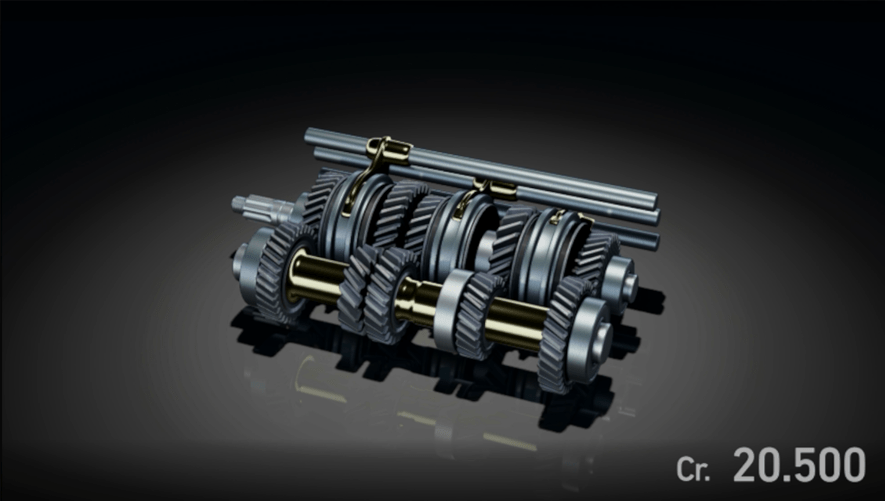A Complete Gran Turismo 7 Tuning Guide

A Complete Guide Gran Turismo 7 Tuning Guide
Understanding the Basics of Car Tuning in Gran Turismo 7
Tuning your car to get the best performance on the track is a big part of Gran Turismo 7. This tuning guide will help you understand how to change your car from a standard model to a racing star.
No matter if you are a skilled racer or just starting with Gran Turismo, this guide will give you the knowledge to adjust your car settings and boost your performance points. You will learn to change things like suspension, aerodynamics, gear ratios, and differential settings. Each part will show you how it affects the way your car drives.
The Importance of Car Tuning for Beginners
For people who are new to the Gran Turismo experience, it’s important to know how tuning affects a car’s performance. You can improve your car’s handling and responsiveness by making small changes. Focus on your driving style first – find out whether you like oversteer or understeer – then you can adjust your car accordingly.
For example, adjusting the initial torque can change how fast your car accelerates. It can also help you keep your speed steady in corners. Also, understanding natural frequency, which relates to the stiffness of your car’s suspension, is important. It helps you find the right balance between a comfortable ride and a responsive one.
Keep in mind that tuning is about testing and trying different options. Each adjustment should be checked and improved on the track. Don’t hesitate to experiment and notice how your car responds to various settings.
Overview of Tuning Options Available in GT7
Gran Turismo 7 has many tuning options. You can adjust almost every part of your car. This includes things like suspension settings and the differential. The chances for customization are nearly endless.
If you are a beginner, you can start with basic changes. This can include things like ride height, spring rates, and anti-roll bars. These suspension settings are very important. They help decide how your car handles corners and bumps.
If you want to make more advanced changes, look into aerodynamics, diff setups, and transmission settings. These can help improve speed and stability a lot. Each tuning option matters. It’s important to know how they work together to get the best out of your car.
Preparing for Your First Tune
Before starting with tuning, it’s important to get ready. First, get to know the tuning shop in the game. Here, you can buy and install many upgrades for your car. These upgrades can change things like the tyre compound and the gearbox. They will affect how your car is set up and its performance on the track.

As you get better, it will be key to try out gear ratios, downforce levels, and other complex settings. Learning these details will improve your tuning skills and help you get great results.
Understanding Gran Turismo 7 Settings Sheets
Gran Turismo 7 lets you save your car settings in “Settings Sheets.” This useful feature helps you create and keep different setups for each car. You can make these setups for various tracks, weather conditions, or pp limits.
Think about having a special setup with high downforce for a twisty track like Trial Mountain. You could also have a low downforce setup for a place like Le Mans, which has fast straight sections. Settings Sheets let you change between these setups quickly. This ensures your car is ready for whatever challenge you face.
You can also use Settings Sheets to meet specific race needs. If a race has a pp limit, you can change the weight, downforce, or engine power through the settings. These tweaks can help your car fit within the required range, so you can race effectively.
Step-by-Step Guide to Tuning Your Car in GT7
Now that you know the basics well, let’s start a simple guide to tuning your car in Gran Turismo 7. This guide will follow steps carefully. We will first look at what your car needs. Then, we will work on the changes to suspension, aerodynamics, transmission, and differential settings.
Each step will help improve your car’s performance a bit more. Keep in mind that you need patience and willing to try new things. Don’t hesitate to make changes, test them out on the track, and adjust your settings until you get the results you want.
Step 1: Analyzing Your Car’s Performance Needs
One of the most important things before making any changes, is to check how your car performs. This means you need to know what your car does well and what it doesn’t do so well in its current state. Drive it on a familiar track. Notice how it turns, speeds up, and stops.
Think about things like top speed, acceleration, and how well it handles corners. Does the car feel shaky at high speeds? Can it use its power properly? Is there a lot of body roll when turning?
Finding these features will help you decide how to tune your car. You can focus on the parts that need more work. This focused method will give you better results. It will also help you see how each change affects your car’s performance.
Step 2: Adjusting Suspension for Improved Handling
Once you know what your car needs for performance, it’s time to adjust the suspension. This part is very important for how your car handles weight shifts, deals with bumps, and keeps the tires in touch with the road. Start by balancing ride height, both front and rear ride height and then move to spring rates.
By lowering the ride height, you can lower your car’s center of gravity. This helps reduce body roll and makes turning more stable. Just be careful not to lower it too much. If you do, the suspension might bottom out, which can hurt handling.
You can also fine-tune the acceleration sensitivity of the differential. This can greatly affect how well your car puts down power, especially in rear-wheel-drive cars. Try out different settings to find the right balance between traction and acceleration.
Step 3: Optimizing Aerodynamics for Speed and Stability
Aerodynamics is very important for how your car runs at high speeds. You can adjust the front and rear wings to make more downforce. Downforce keeps the car pressed down on the track, which helps with grip and stability, especially in the corners.
More downforce can help you turn faster, but it also adds drag. This means your top speed might drop. It is vital to find a good balance between downforce and drag, especially on tracks that have both fast straight parts and tight turns. For tracks with long straights, reduce downforce to gain an edge on high-speed sections.
Try out different aero settings and see how they affect your lap times. You may be surprised to find that small changes to the front and rear wings can significantly impact how your car handles in fast turns and on straight sections.
Step 4: Fine-Tuning Transmission for Efficiency
Your car’s transmission is very important. It helps to decide how well the engine power goes to the wheels. By adjusting the gear ratios, you can improve acceleration and top speed for different tracks. Shorter gear ratios make your car accelerate faster, while longer gears help you reach higher speeds.
For tracks with long straight sections, like Nürburgring, Nordschleife, Spa or Le Mans, a higher top gear is useful. On the other hand, tracks with many slow turns will be better with shorter gear ratios. This setup will help you speed up better coming out of corners.
Don’t be afraid to try different gear ratios. It can help you find the best setup for every track. Even small changes can help your lap times a lot. Finding the right mix of acceleration and top speed can be the key in a close race.
Step 5: Configuring Differential Settings for Better Control
The differential is an important part of a car. It helps spread torque between the wheels when you speed up or turn. Changing the differential settings can really change how your car handles, especially its balance and rotation.
One key adjustment is the initial torque. This affects how much the differential allows the driven wheels to spin at different speeds. More initial torque can help keep the car stable, especially when you are coming out of a corner. However, if you set it too high, it might cause under steering.
It’s important to try out different differential settings. This helps you find the right balance for your driving style and the specific track you are on. Think about your car’s drivetrain layout, whether it’s front-wheel drive, rear-wheel drive, or all-wheel drive, and make adjustments that work for that.
Quick Tip: One of the most impactful upgrades in GT7 is weight reduction. By reducing your car’s weight, you improve almost every performance aspect, from acceleration and braking to corner entry. A lighter car is easier to handle, responds more quickly to driver inputs, and can significantly improve lap times. There are multiple stages of weight reduction, each offering diminishing returns but still providing a competitive edge.
Beyond Basic Tuning: Gran Turismo 7 Tuning Guide Advanced Techniques
Once you understand the basics of suspension, aerodynamics, and transmission tuning, you can look into advanced methods. These include nitrous oxide injection, ballast adjustments, and detailed ECU adjustments. These techniques can make your car run better.
However, these advanced methods need you to have a better grasp of how a car works. You need to know how each change affects other parts of the setup. It is important to be careful and make small changes. Large changes can greatly change how your car behaves.
Exploring the Use of Nitrous for Speed Boosts
Nitrous oxide injection, often called nitrous, is a popular upgrade in Gran Turismo 7. It gives a temporary boost in power by adding nitrous oxide to the engine, which helps increase top speed and acceleration.
When you use nitrous, it puts a set amount of nitrous oxide into the intake manifold. This mixes with fuel to create a stronger combustion mix. This allows the engine to reach maximum power for a short time.
Using nitrous wisely can change the game, especially when you need that much power for fast acceleration. This can be helpful when you want to pass other cars or speed out of slow corners. But remember, nitrous doesn’t last long. It’s important to use it wisely to get the most out of it during a race.
The Role of Ballast and ECU Adjustments
Advanced tuners in Gran Turismo 7 can make their cars better by using ballast and ECU changes. Ballast adds weight to certain parts of the car. This can change how weight is spread out, which affects how the car handles.
For example, putting ballast at the back can help with traction and lessen oversteer. On the other hand, placing it in the front can help with turning and reduce understeer. Playing around with where to put ballast is a smart way to get your car to match your driving style.
ECU adjustments give tuners even more control over the engine. By carefully changing things like fuel mapping, ignition timing, and boost pressure for turbo engines, skilled tuners can unlock more power while also being smart with fuel use.
Choosing the Right Tires for Different Tracks
Choosing the right tire compound is very important in Gran Turismo 7. It affects your car’s grip, handling, and performance. Softer tire compounds give better grip but wear out faster. Harder compounds last longer but have less grip.
Think about the track layout, weather, and race length when you choose your tyres. For dry races with fast corners, softer compounds like Sports or Racing tires are usually better. However, in an endurance race, you should pick more durable compounds for a longer-lasting performance. When the track is wet, you need to decide if you go for intermediates or wet tires.
Conclusion and Final Tips for Successful Tuning in GT7
Mastering tuning in Gran Turismo 7 is very rewarding. When you learn about car settings, you can get the best out of your car. This will help you do better on the track and win more cars for your collector level. Test each change you make. Be patient and feel free to try new things until you get the results you want.
Frequently Asked Questions
Can I use a GT7 tuning calculator for better precision?
Yes, GT7 tuning calculators can help you get started if you want to tune your car more accurately. You can enter specific details, like car settings and performance points. These calculators make the tuning process easier.
How do performance points affect car tuning?
Performance points, or PP, are a way to measure your car’s performance in Gran Turismo 7. Some races, especially in Sport Mode, have a PP limit. This means you may need to tune your car to stay within that limit. If you want to lower your PP, you can use a power restrictor or change other performance settings.
Are there any specific tuning setups that work best for certain types of races or tracks in Gran Turismo 7?
In Gran Turismo 7, certain races or tracks may benefit from specific tuning setups. For instance, high-speed tracks might require aerodynamic adjustments, while technical circuits could favor suspension tweaks. Understanding these nuances can give you an edge in different race scenarios.
What is camber?
Camber refers to the angle of the wheels relative to the ground when viewed from the front or rear of the car. Specifically, it measures the tilt of the tires inward (negative camber) or outward (positive camber). Camber tuning is primarily used to improve cornering performance



